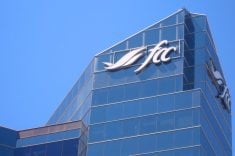HERSCHEL, Sask. – Farmers huddled together in a native pasture on a recent warm summer day to talk trash.
Jeremy Brown, a range agrologist with the Saskatchewan Watershed Authority, said during a July 9 field tour organized by the Saskatchewan Forage Council that trash is the litter that remains in a field after grazing.
“This litter captures rain and stops evaporation,” he said.
“Any amount of litter that’s there is better than none at all.”
Brown said the ultimate goal in range management is to grow more grass and feed more cows.
Read Also

Alberta rancher finds success with virtual fencing
Increased use of virtual fencing in cattle industry in Canada showcased at Innovation on the Range in Southern Alberta.
“The long-term productivity is the goal as opposed to what you can harvest this year.”
He showed producers how to perform simple range health tests by hand raking grass from a square foot area. A healthy pasture will have enough trash that producers can hold with both hands.
Brown said water will travel twice as far down bare hills as heavily grassed areas before soaking into the ground.
Temperature gauges in uneven ground revealed other differences, including how barren hills are significantly warmer than those with good grass cover.
A simple field test can also be done to determine the type of soil.
After combining soil and water and rolling a sample of mud from the Herschel pasture into a small sausage shape, participants agreed the site showed a sandy loam soil with good adhesion and lots of grit.
The tests found that the field, owned by producer Gord Houston, was in fair condition.
Houston, who has a 150-head cow-calf operation, learned that his practice of grazing cattle later in the season is best for a native pasture.
He agreed that more rotational grazing might help improve the field’s condition, saying it would leave more carryover into the next season if cattle were kept there for a few less days.
“If you’ve got good litter, you’ve got good healthy land.”














